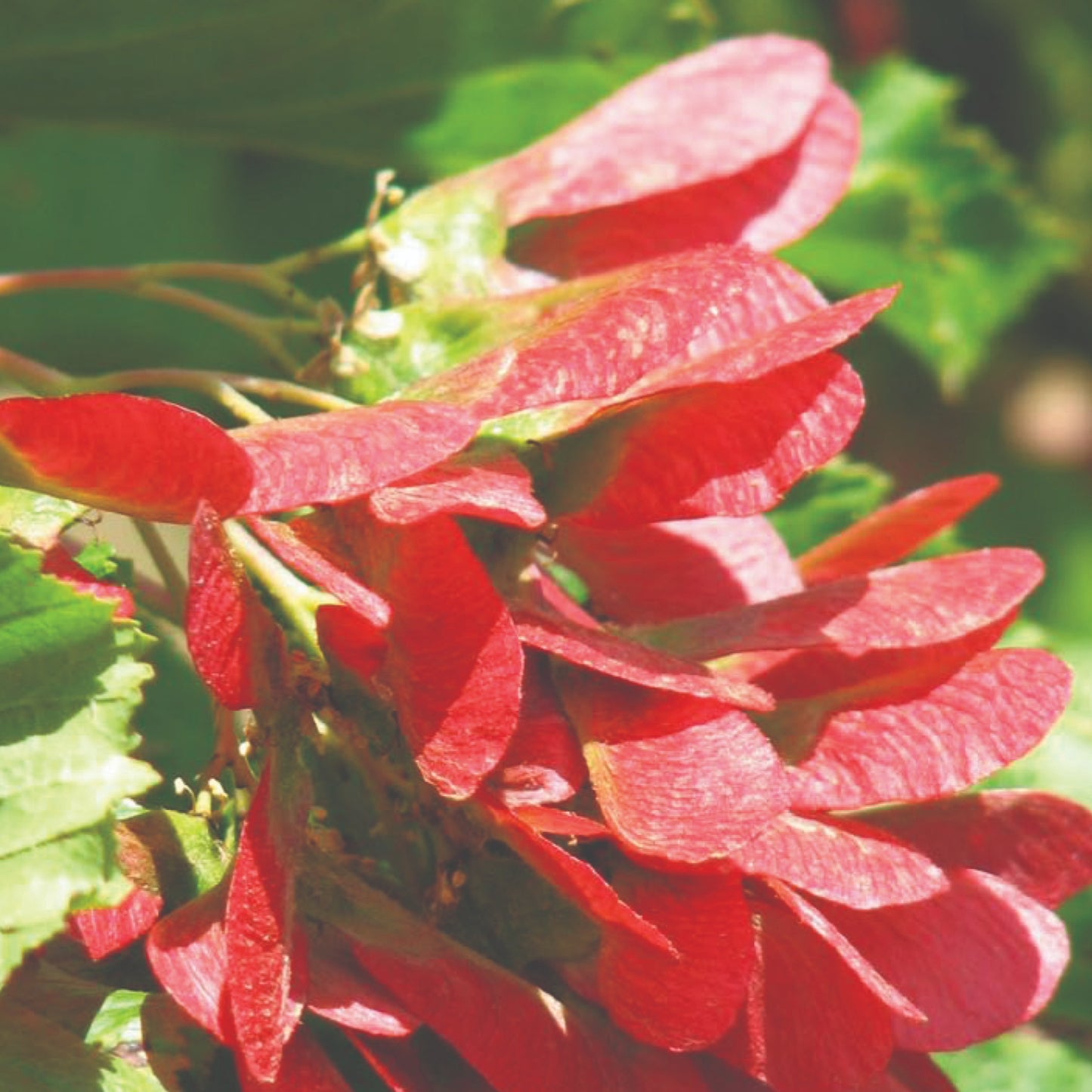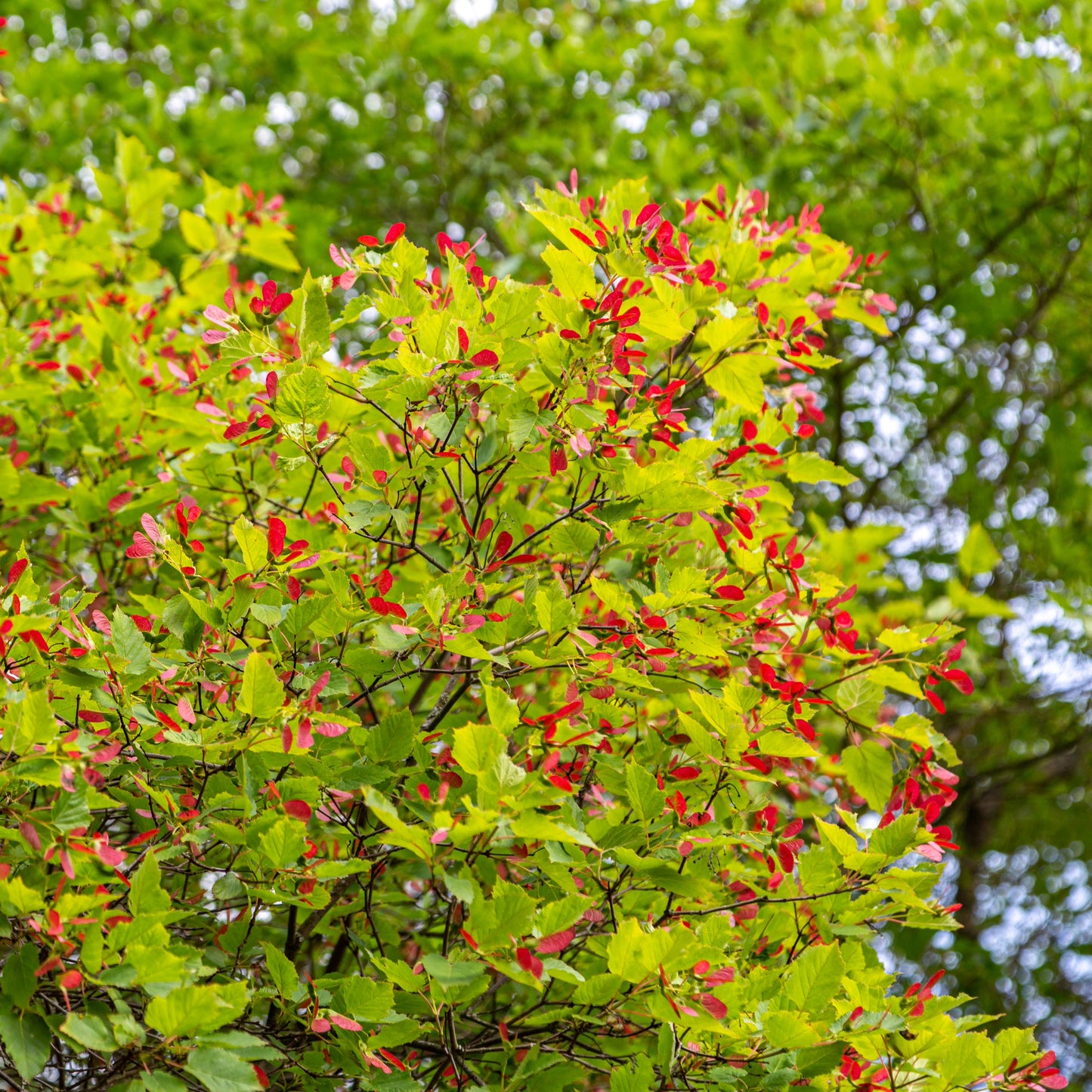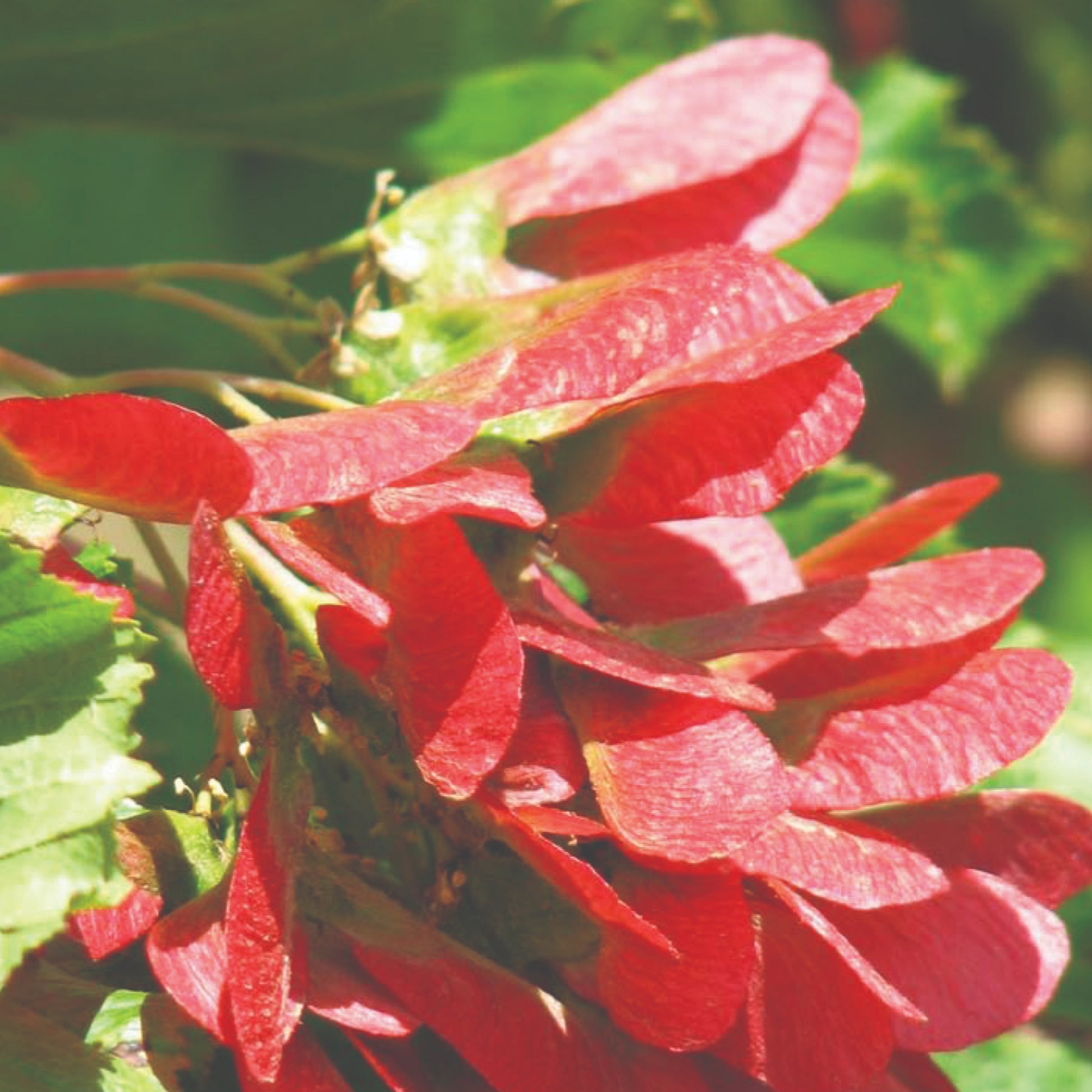1
/
of
3
Acer tataricum Hot Wings® ('GarAnn')
Acer tataricum Hot Wings® ('GarAnn') – Hot Wings® Tatarian Maple
Acer tataricum Hot Wings® ('GarAnn') – Hot Wings® Tatarian Maple
Exposure
- Sun
- Partial shade
Rusticity
3, 4, 5, 6, 7, 8, 9
Bloom time
- May
- June
- Spectacular red fruit in summer
- Superb fall colouration
- Very robust small tree
- Tolerates drought, difficult soils
- Ideal for small gardens
The Hot Wings® Tatarian Maple is an exceptional small tree that offers a visual spectacle across three seasons, especially in summer. Its main, entirely unique attraction is its massive production of bright scarlet-red samaras (the "helicopters") that cover the tree in mid-summer, giving it the appearance of being in bloom. This tree combines this striking beauty with remarkable hardiness and adaptability, making it a top choice for small urban gardens.
Characteristics
- Foliage: It develops dense deciduous foliage. The leaves, typical of maples with their 3 to 5 lobes, are a medium green during the summer. In the fall, the foliage transforms and displays a flamboyant palette of colours, ranging from yellow to orange and red.
- Flowering: In the spring, it produces discreet but fragrant small, yellowish-white flowers that attract pollinators.
- Fruiting (Samaras): The main show occurs in summer, when the flowers give way to an abundance of spectacular, bright red winged fruits (samaras). These red "wings" persist on the tree for a long time, contrasting beautifully with the green foliage.
- Light: It thrives in full sun, which ensures the most beautiful fall colours, but it also adapts well to partial shade.
- Habit: It forms a small tree or large multi-stemmed shrub with a rounded, wide, and spreading habit.
- Growth: With a medium growth rate, it reaches a height and spread of about 4.5 to 6 m (15-20 feet).
- Moisture: It prefers average moisture conditions.
- Soil: It is an extremely adaptable tree that grows well in a wide variety of soils, including clay or alkaline soils, as long as the drainage is adequate.
- Hardiness: Very hardy, it faces the harsh winters of Zone 3 without any problem.
- Resistance: It is known for its high tolerance to drought and difficult soil conditions.
Uses
- Types of Use: Its modest size makes it a perfect specimen tree for small urban or suburban gardens. It also integrates very well into parks and large landscapes.
- Ornamental Features: It offers multi-season interest: spring flowers, a striking summer display with its red samaras, and flamboyant fall foliage.
Care
- Watering: Water regularly during the first season to establish a deep root system. Afterwards, it tolerates drought well.
- Fertilizing: It generally does not require any fertilization to perform well.
- Pruning: Its maintenance is minimal. To shape it, prune in summer (July-August) to avoid sap flow. Deadwood can be removed at any time.
- Planting: Plant it in the spring or fall in well-drained soil.
- Winter Protection: This very hardy tree requires no special protection once mature, but applying a mulch at the base of young plants is recommended for their first winter.
Plant details
Dimensions
Dimensions
Spacing
- 600 cm
Spread
450 - 600 cm
Height
450 - 600 cm
Spacing
- 240 in.
Spread
177 - 236 in.
Height
177 - 236 in.
Characteristics
Characteristics
Habit:
- Mounded
- Vase-shaped
Flowering colours:
- White
- Yellow
Plant needs
Plant needs
Watering:
- Average
Maintenance:
- Easy
Soil requirement:
- Tolerates dry, well-drained soil
Features
Features
Resistance:
- Drought
Attract:
- Pollinators
- Birds
Use:
- Specimen
- Mass planting
- Hedge
Attribute:
- Fall colouration
- Native










